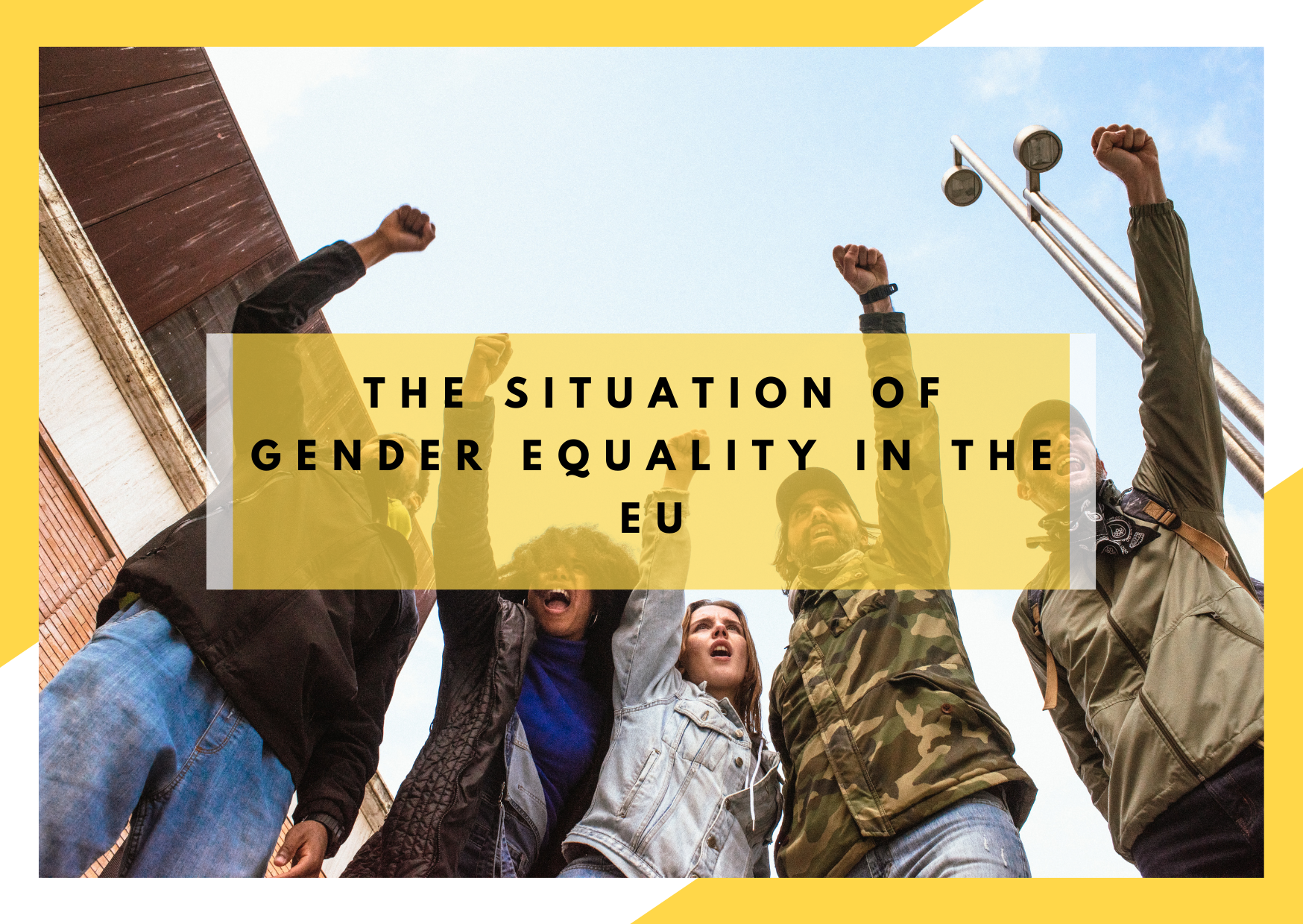July 25, 2025

Throughout its history, gender equality has been one of the main challenges of the European Union. However, although equality between women and men is a core value enshrined in the Lisbon Treaty and the EU promotes gender equality, women’s rights are still threatened in its member states. What is the current state of gender equality in the EU? Here are some key facts and statistics to provide insight into the ongoing situation.
Statistics tools measuring gender equality in Europe
It is not always easy to measure gender equality in a precise way, as there is not a common method shared by all EU countries.
One of the most reliable tools is the Gender Equality Index, developed by the European Institute for Gender Equality (EIGE). This index, whose first edition was in 2013, reveals both progress and setbacks in gender equality and adopts an intersectional approach. Each country within the EU and the EU in general, is assigned an overall score, as well as scores in specific areas, out of 100, where a score of 100 represents a state of complete gender equality. In the 2023 edition the EU had an overall score of 70.2. The highest country was Sweden with 82.2 and the last country was Romania with 56.1. Other examples include Italy (68.2), Poland (61.9) and Greece (58). However, data on gender-based violence remains scarce, which is why no score is assigned to the area of violence against women.
Although the overall score gives us a general idea of gender equality in EU countries, we can further analyse two specific areas: education and employment, and representation of women in politics.
Education and employment
As far as tertiary education is concerned, all EU member states recorded a negative gender gap, meaning that more women than men obtain a university degree. However, we can also observe that women still favour studies in the fields of humanities, arts and health over those in STEM fields.
Although women generally reach a higher level of education, differences in the labour market are still evident. In fact, statistics show that men are overall more likely to have a full-time job (57% vs. 42%), with the smallest gap in Sweden and the largest in Italy.
Moreover, a key issue for women’s rights is the gender pay gap, which can be described as the average gross hourly earnings between women and men. On average working women in the EU earn 12,7% less per hour than men. However, as other indicators, this gap varies largely according to the country. For example, it is higher in Estonia, Austria and Germany and lower in Italy and Belgium. Also, Luxembourg represents a virtuous example, having closed its gap and reached a gender balance. The gap is also higher in specific sectors, such as insurance and finance. Some of the reasons for this difference in salaries include a higher percentage of women doing part-time jobs (which is linked to women being more involved in childcare and housework), working in low-paying sectors and having low-responsibilities jobs.
Representation in politics
EU-wide data show that women remain under-represented in political decision-making at local, national and EU levels. In the Gender Equality Index ‘power’ is the area where most progress of gender equality has been made in the past 10 years but it is also the area where the gender gap remains widest. In fact, the European Union score given to this area is 59.1, the lowest among all categories, with the specific subcategory of ‘political power’ reaching a score of 61.4. Nowadays the progress at a European level seems to be slowing down, as the number of women elected in the EU parliament after the recent elections has fallen for the first time in 45 years, going from 41% in 2019 to 38.79%.
Another important aspect in this case is the diversity of the women involved in political decisions. In general, there is no EU-wide data on the political representation of different groups of women, such as women from ethnic minorities, LGBTI women, older or younger women, or women with disabilities but the data available suggest that these groups are under-represented.
In conclusion, although enshrined in its treaties, gender equality in the EU is still far from being a reality. With the Gender Equality Index we can still see the discrimination faced by women in different areas of life. This is the EU still needs to rethink and promote its gender equality strategy in the upcoming years.
Sources:
